Archived Water Damage Blog Posts
Creating a Family Emergency Plan for Water-Related Incidents
10/15/2024 (Permalink)
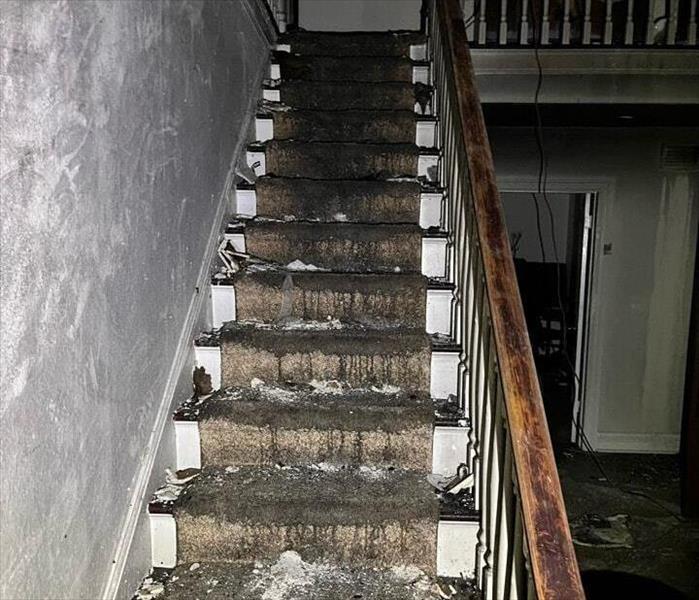 For more expert advice and assistance in protecting your home from water damage, contact SERVPRO of Whittier today.
For more expert advice and assistance in protecting your home from water damage, contact SERVPRO of Whittier today.
Water-related incidents, such as floods, heavy rainstorms, and water main breaks, can strike without warning, causing significant damage to your home and disrupting your daily life. In fact, floods are the most common and costly natural disaster in the United States, with an average of 14,000 people affected each year, according to FEMA. Given the unpredictable nature of these events, it’s crucial to have a well-thought-out family emergency plan in place. SERVPRO® of Whittier is here to provide expert insights on how to create an effective emergency plan that will keep your loved ones safe and prepared.
Understanding the Importance of an Emergency Plan
When water-related incidents occur, quick and coordinated action is essential. Having an emergency plan in place ensures that everyone in your household knows what to do, where to go, and how to stay safe. A well-crafted plan can reduce panic, streamline communication, and expedite the response, minimizing the impact of the incident on your family and property.
Step 1: Identify Potential Water-Related Risks
The first step in creating a family emergency plan is to identify the water-related risks specific to your area. Consider the following:
- Flood Risk: Are you in a flood-prone area? Check FEMA’s flood maps to determine your risk level.
- Heavy Rainfall: Is your region prone to heavy rainstorms that could lead to flash floods or mudslides?
- Proximity to Water Bodies: Do you live near rivers, lakes, or the ocean that could overflow or cause storm surges?
- Aging Infrastructure: Are there old water mains or drainage systems in your area that could fail during severe weather?
Understanding these risks will help you tailor your emergency plan to the specific threats you may face.
Step 2: Develop a Communication Plan
Effective communication is key during an emergency. Ensure that all family members know how to stay in touch if separated. Your communication plan should include:
- Emergency Contacts: Compile a list of important phone numbers, including those for local emergency services, utility companies, and out-of-town relatives.
- Meeting Points: Designate a safe meeting spot outside your home and a secondary location in case the primary spot is inaccessible.
- Communication Tools: Make sure everyone knows how to use alternative communication tools, such as text messaging or social media, in case phone lines are down.
Step 3: Create an Evacuation Plan
In some cases, evacuation may be necessary. Your plan should outline clear steps for safely leaving your home:
- Evacuation Routes: Identify multiple evacuation routes from your home and neighborhood, avoiding areas that could be flooded.
- Emergency Kit: Prepare an emergency kit with essentials such as water, non-perishable food, flashlights, batteries, important documents, and a first-aid kit. Store it in an easily accessible location.
- Pet Plan: Don’t forget your pets! Make sure you have carriers, leashes, and food ready for them as well.
Step 4: Practice and Review the Plan Regularly
An emergency plan is only effective if everyone in the household is familiar with it. Conduct regular family meetings to review and practice the plan. Simulate different scenarios, such as a sudden flood or power outage, and go through the steps to ensure everyone knows their role. Update the plan as needed, especially when there are changes in your household, such as a new family member or a move to a different home.
Step 5: Protect Your Home from Water Damage
While having an emergency plan is crucial, taking preventive measures to protect your home from water damage is equally important. Consider the following tips:
- Install Flood Barriers: Use sandbags or other flood barriers to protect your home from rising water.
- Seal Leaks and Cracks: Inspect your home’s foundation, windows, and doors for any leaks or cracks and seal them to prevent water intrusion.
- Maintain Your Sump Pump: If your home has a basement, ensure that your sump pump is in good working condition and has a battery backup in case of power failure.
- Elevate Electrical Systems: If you live in a flood-prone area, consider elevating your electrical systems to reduce the risk of damage during a flood.
Step 6: Stay Informed
Staying informed about potential water-related incidents is critical. Sign up for local alerts and warnings from reliable sources, such as the National Weather Service and local emergency management agencies. Having access to real-time information will help you make informed decisions during an emergency.
Creating a family emergency plan for water-related incidents is an essential step in safeguarding your loved ones and property. By identifying potential risks, developing a communication plan, preparing for evacuation, and taking preventive measures, you can ensure that your family is ready to respond effectively when disaster strikes. Regular practice and staying informed will keep your plan up-to-date and your family prepared for any water-related emergency. For more expert advice and assistance in protecting your home from water damage, contact SERVPRO of Whittier today.
Common Signs of Water Damage in Your Home
6/12/2024 (Permalink)
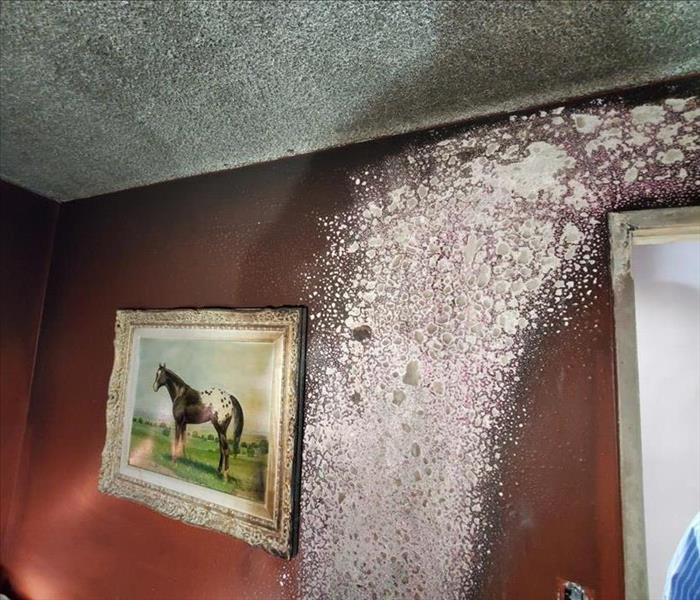 Here are a few common signs of water damage in your home.
Here are a few common signs of water damage in your home.
Water damage can be a serious problem for homeowners, leading to costly repairs and potential structural issues if left unaddressed. Detecting water damage early is crucial to prevent further damage and minimize the impact on your home. In this blog, we will discuss some common signs of water damage in your home that you should be aware of.
Discoloration and Stains on Walls and Ceilings
One of the most apparent signs of water damage is discoloration or staining on walls and ceilings. Look for areas that appear darker, yellowish, or have watermarks. These stains often indicate prolonged exposure to moisture and can be indicative of leaks or other water sources behind the wall or above the ceiling.
Mold and Mildew Growth
The presence of mold and mildew is a clear indication of water damage in your home. Mold thrives in moist environments and can quickly spread if not addressed promptly. Look for visible signs of mold growth, such as black spots or a musty odor, particularly in areas with high humidity, such as bathrooms, basements, or areas affected by previous water damage.
Warped or Buckled Flooring
Water damage can cause flooring materials like wood and laminate to warp or buckle. If you notice unevenness or a spongy feeling when walking on your floors, it may indicate water damage beneath the surface. Pay close attention to areas near water sources, such as bathrooms, kitchens, or laundry rooms, where leaks are more likely to occur.
Damp or Musty Odor
Persistent, damp, or musty odors in your home can be a sign of hidden water damage. If you notice these odors even after cleaning and airing out your home, it could indicate the presence of moisture behind walls, under floors, or in other concealed areas. Investigate the source of the smell to identify any underlying water damage issues.
Peeling or Bubbling Paint
Excessive moisture can cause paint to peel, bubble, or blister. If you notice paint that is flaking or bubbling away from the surface, it may indicate water damage underneath. This can occur due to leaks or seepage from damaged plumbing, roofs, or windows. Addressing the underlying cause of the moisture is essential to prevent further damage and peeling.
Sagging or Stained Drywall
Water damage can cause drywall to become soft, sag, or develop stains. If you see drywall that appears swollen, discolored, or shows signs of bubbling, it may be a result of water infiltration. Sagging or bulging areas often indicate that water has been absorbed, compromising the integrity of the material.
Increased Water Bills
Unexpectedly high water bills could be a potential sign of water damage. A sudden increase in water usage may indicate an undetected water leak in your plumbing system. Monitor your water bills closely and investigate any significant changes to identify possible water damage issues.
Being aware of the common signs of water damage in your home can help you detect and address issues before they escalate. If you notice any of these signs, it is important to act promptly to prevent further damage and protect your home. If you require professional assistance with water damage restoration, contact SERVPRO® for reliable and expert restoration services.
Preventative Home Maintenance to Shield Against Future Water Damage
2/19/2024 (Permalink)
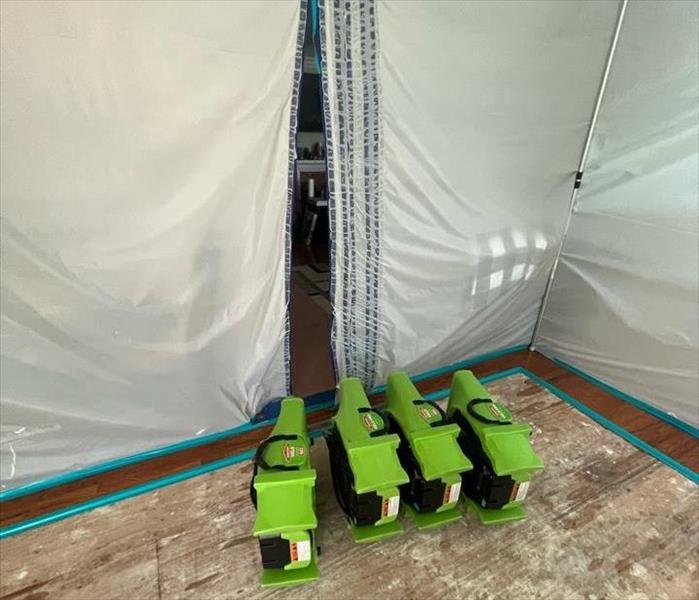 Embracing preventative home maintenance might not grant you a superhero cape, but it sure will keep water-damage villains at bay.
Embracing preventative home maintenance might not grant you a superhero cape, but it sure will keep water-damage villains at bay.
Welcome to the world of proactive home ownership, where a stitch in time saves more than nine. Let's unravel the practical magic of preventative home maintenance to keep water damage at bay. No mystical spells here, just some straightforward tips to protect your home from water intrusion.
1. Gutter Maintenance
Your gutters are the silent heroes of home maintenance. Regularly clear them of debris like leaves and twigs – anything that might hinder water flow. This simple act prevents water from pooling on your roof and ensures it's directed away from your foundation, protecting it from potential water damage.
2. Sealing Cracks and Gaps
Flashing, those humble metal strips, are your allies in the battle against water intrusion. Inspect and maintain the flashing around your windows, doors, and roof. These unassuming metal strips seal cracks and gaps, hindering water's attempts to sneak into your home and cause damage.
3. Inspect Foundation
Your foundation is the stronghold of your home, and it deserves a clear perimeter. Ensure that the area around your foundation slopes away, directing rainwater and runoff harmlessly away from your home. This simple landscaping trick prevents water from pooling around your foundation, reducing the risk of water seeping in.
4. Plumbing Vigilance
Your plumbing is the lifeblood of your home, and even they need regular check-ups. Inspect for leaks under sinks, around appliances, and in the dark corners of your basement. Promptly address any drips or puddles, and you'll be one step closer to preventing water damage.
5. Roof Maintenance
Your roof stands as the main guardian against the elements. Regularly inspect it for missing shingles, damaged flashing, or any signs of wear and tear. A well-maintained roof ensures that raindrops remain outdoors.
Embracing preventative home maintenance might not grant you a superhero cape, but it sure will keep water-damage villains at bay. Consistent inspections and a touch of DIY magic can protect it from the silent but destructive forces of water. Remember, a little maintenance today keeps the flood away tomorrow!
Common Causes of Appliance-Related Water Damage
10/10/2023 (Permalink)
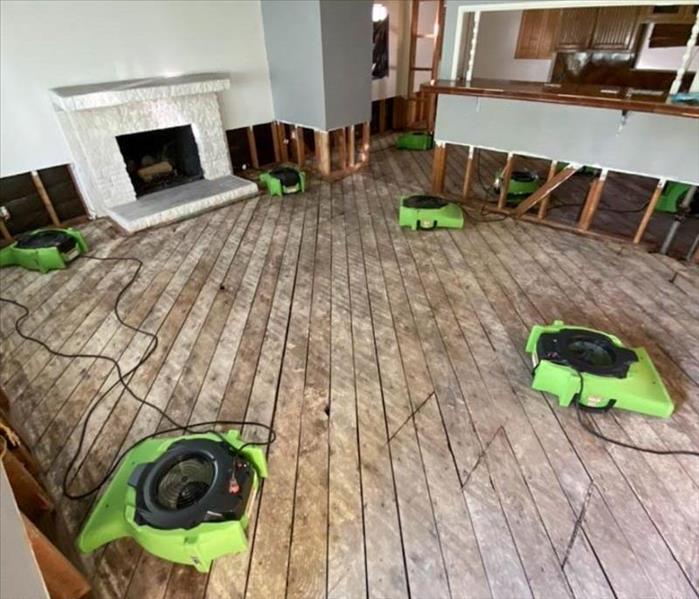 While appliances make our lives more convenient, they can also be a source of unexpected water damage.
While appliances make our lives more convenient, they can also be a source of unexpected water damage.
While appliances make our lives more convenient, they can also be a source of unexpected water damage. In this blog, we'll explore common causes of water damage from appliances in Whittier, California, and provide essential tips to help you protect your home.
1. Faulty Washing Machine Hose
One of the most common culprits of appliance-related water damage is a faulty washing machine hose. Over time, these hoses can develop cracks or weaken, leading to leaks. Regularly inspect your washing machine hoses for signs of wear, and replace them every five years as a preventive measure.
2. Dishwasher Leaks
Dishwashers can also be prone to leaks, often due to worn gaskets, damaged seals, or loose connections. Inspect your dishwasher regularly and address any leaks promptly to prevent water damage to your kitchen and surrounding areas.
3. Refrigerator Water Line Issues
Refrigerators with ice makers and water dispensers have water lines that can become damaged or develop leaks. Check the water line connections and hoses periodically, and replace them if you notice any signs of wear or leakage.
4. Clogged Drain Lines
Both air conditioning units and washing machines have drain lines that can become clogged with debris or sediment. Regularly clean these lines to prevent overflow and water damage.
5. Water Heater Failures
Water heaters have a limited lifespan, and as they age, they can develop leaks. Regularly inspect your water heater for signs of rust, corrosion, or moisture around the base. If you notice any issues, consider replacing your unit to avoid major water damage.
6. Leaky Refrigerator Drain Pans
Refrigerators have drain pans that can collect condensation. If these pans become damaged or cracked, they can leak water onto your kitchen floor. Inspect your refrigerator's drain pan and replace it if needed.
7. Regular Maintenance
To prevent appliance-related water damage in Whittier, it's essential to perform regular maintenance on your appliances. Check hoses, connections, seals, and drain lines periodically, and address any issues promptly.
8. Install Water Leak Detectors
Consider installing water leak detectors near your appliances that are prone to leaks. These devices can alert you to leaks before they cause significant damage, allowing you to take preventive action.
In Whittier, California, appliances are essential to our daily lives, but they can also be a source of unexpected water damage. By staying vigilant, performing regular maintenance, and addressing issues promptly, you can protect your home from appliance-related water damage. Remember, if you ever experience water damage in your Whittier home, SERVPRO® of Whittier is here to help. Our team specializes in water damage restoration and can assist you in returning your home to its pre-damage condition. Stay proactive and enjoy the convenience of your appliances while keeping water damage at bay.
Reasons for a toilet leaking.
3/8/2023 (Permalink)
You wake up in the morning to find a puddle of water on your bedroom floor. This isn't just an inconvenience, it's a sign that you have a leaking toilet. Leaking toilets are one of the most common household plumbing problems, and they're also one of the easiest to fix.
The toilet tank
The tank is the most common culprit for leaks. If it's cracked or has a leaky seal, water will drip down into the bowl when it fills up with water. You can hear this dripping sound when you fill up your toilet tank with water and then listen closely as it drains out.
If you've determined that your toilet tank is leaking because of cracks or other damage, we recommend replacing your entire unit rather than trying to repair it yourself (or hiring someone who isn't qualified).
The overflow tube
The overflow tube is the part of the toilet that drains excess water from the tank. It's usually connected to the wall behind your toilet, and if it's clogged or kinked, it can cause water to back up into your tank.
To check whether or not this is what's happening in your case:
- Turn off all taps in your home (if you have a sink near by). This will prevent any new leaks from forming while you investigate other possible causes.
- Look at where your overflow tube connects with its pipe leading outside of the house; if there are signs that something has been blocking this connection--like leaves or dirt--remove them immediately!
Water supply line
Wet spots on the floor. If you have wet spots on the floor, it is likely that there is a leak in your water supply line. This can happen when the water is turned off or if you are experiencing low water pressure in your home. Slow or no water supply to toilets and faucets. If there is a leak in your plumbing system, this can cause slow drainage in toilets and faucets as well as other problems with water flow throughout your house's plumbing system. Water supply lines damaged by freezing temperatures during winter months when they're not insulated properly before being buried underground where they're more susceptible to damage from frost.
Flapper and seal
Toilet flappers, also known as flush valves, are the piece that seals and opens to allow water into your toilet tank. The seal is attached to this part of your plumbing system and acts as a water barrier between your toilet bowl and tank. When you close off this opening by shutting off your valve or flapper with your finger, air pressure builds up behind it (similarly to how blowing up a balloon creates pressure). When you open up that area again by lifting up on your handle or pushing down on an automatic sensor button, this releases that built-up air into its normal position so that water can flow into your bowl once again.
Serious Damage to your home
Leaking toilets are not only annoying, but they can cause serious damage to your home if you don't take care of them. If you have a leaking toilet, it's important to know what the problem is and how to fix it. If your home suffers from water damage from a leaking toilet, give SERVPRO of Whittier a call today!
Equipment & Safety Precautions Used During Water Removal
1/17/2023 (Permalink)
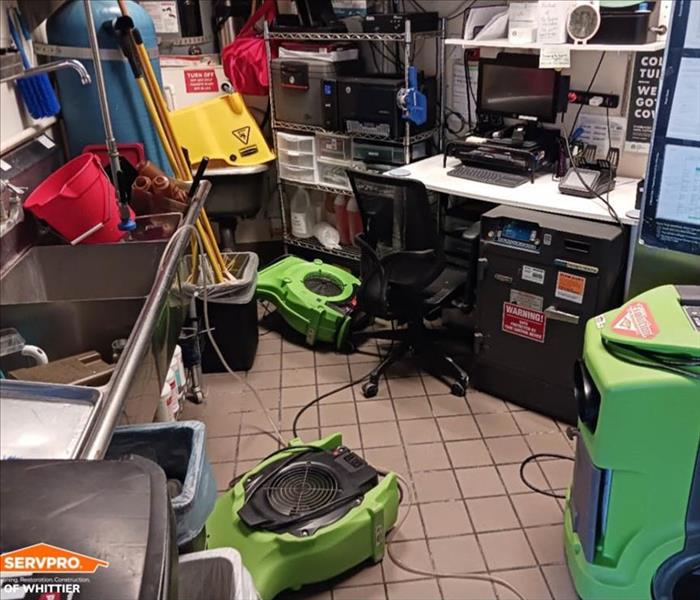 Water damage can happen at any time, even when you least expect it. That’s why it’s important that you work with a professional water removal company.
Water damage can happen at any time, even when you least expect it. That’s why it’s important that you work with a professional water removal company.
Water removal is a hard job that requires careful planning and precautions. The risks of water removal can be minimized by using the best equipment and following proper safety procedures.
Equipment Used in Water Removal
Water removal equipment is another important safety precaution used in water removal. When using this type of equipment, you should always wear appropriate personal protective gear such as gloves and goggles to protect yourself from injury due to contact with hazardous materials such as chemicals or sharp objects.
Safety Precautions Used
Safety precautions are used to protect workers and those in the immediate area from the hazards associated with water removal. Personal protective equipment (PPE) is worn by everyone on the job site, and it includes a hard hat, safety glasses, gloves, and other protective gear.
These items are worn to ensure that people are kept safe while they are working or performing their duties at a water damage restoration job site. Safety glasses can protect eyes from flying debris or chemicals used during the cleanup of carpets or upholstery after flooding. Gloves prevent cuts from sharp objects such as glass shards that may be present in your home following severe storms like hurricanes when windows break due to high winds or tornadoes touching down nearby causing structural damage like tree limbs falling onto houses where no one was hurt but will need repairs done because there were leaks caused by branches hitting roofs which let rain into living spaces causing mold growth within walls behind drywall panels before you knew what hit them - so now there's mold growing underneath walls where insulation has been soaked with moisture from outside which could potentially cause structural problems later down the road if not properly taken care of now!
Why a Professional is Necessary
You should hire a professional water removal company because they have highly trained technicians that are experienced in the use of sophisticated equipment, so you know the job will be done correctly. The technicians know how to remove water from your home or business without damaging your property. They also have access to advanced technologies such as dehumidifiers and blowers that can help dry out wet areas faster than could be achieved on your own. These machines enable them to dry out areas quickly, which can prevent mold growth and other damage caused by moisture.
The technicians will also use fans and dehumidifiers to remove moisture from the air. This is extremely important because if they don’t do this step, mold and mildew can grow in your home or business.
The primary objective in water removal is to restore the property to its preloss condition. Water damage can happen at any time, even when you least expect it. That’s why it’s important that you work with a professional water removal company that can respond quickly and efficiently.
When Should I Change The Supply Lines In My Bathroom?
11/5/2022 (Permalink)
When Should I Change The Supply Lines In My Bathroom?
It's not uncommon to have a leak in your Friendly Hills, CA home or business. A leaky pipe can be a huge problem and may require the help of a plumber, but if you catch it early enough you might be able to fix it yourself.
Copper supply lines are the most common. Stainless steel, or braided stainless steel, supply lines are also popular and are often used in bathtubs, water heaters, and outside faucets.
A leaking supply line could be due to a faulty seal at either end of the line, which allows water to escape slowly and drip down the pipe; a hole in the supply line; or corrosion inside the pipe.
- A leaking supply line could be due to a faulty seal at either end of the line, which allows water to escape slowly and drip down the pipe;
- A hole in the supply line; or
- Corrosion inside the pipe.
A leak in a plastic pipe is usually due to a faulty seal or corrosion on the inside of it.
Plastic pipes typically have a longer lifespan than metal pipes, but they have been known to break under extreme pressure. Metal pipes are often more reliable but will rust over time causing them to burst.
When deciding which type of pipe to use, consider the durability of your bathroom. If it is a relatively small area, chances are you will be able to get away with plastic pipes. However, if you need a lot of piping for your bathroom and plan on expanding later, metal pipes may be better suited for this situation as they are more durable and less likely to break.
It's also important to consider what kind of pressure is going through your pipes: metal pipes have been known to burst when put under extreme pressure; however plastic ones tend not to do so as easily.
If a leak occurs during standard business hours, it can usually be fixed within 24 hours. Otherwise, you may need to wait until the next business day before you're able to repair it with a plumber.
When you experience a leak in your bathroom, it's important to call out a professional plumber as soon as possible. A leak can quickly become a major problem if left unrepaired for too long. If a leak occurs during standard business hours, it can usually be fixed within 24 hours. Otherwise, you may need to wait until the next business day before you're able to repair it with a plumber.
24-hour plumbing repair is available in most areas and allows you to get immediate service when there is an emergency that requires attention right away. Plumbers can be called out at any time of day or night so that your home isn't left without water for too long while waiting for help from someone who is not available due to scheduling issues or other reasons (such as holidays).
While plastic pipes are generally less expensive than metal pipes, they can also be more easily cracked if they're exposed to corrosive substances like bleach or ammonia.
While plastic pipes are generally less expensive than metal pipes, they can also be more easily cracked if they're exposed to corrosive substances like bleach or ammonia. If you have any doubts about whether your plastic pipes will hold up, it's worth considering the cost of repairing a broken pipe before choosing plastic over metal.
While many people assume that metal supply lines are more durable than their plastic counterparts, this isn't always true. Metal supply lines can be damaged by extreme pressure or heat—in other words, if something gets stuck in the drainpipe and causes a build-up of water pressure behind it (kind of like when you try to flush too much toilet paper), then the metal pipe might burst apart under the force of all that water pressure.
We hope you’ve found this article informative and helpful. If you have any questions or comments, please leave them below!
3 Reasons Why Your Toilet Leaks When You Flush
4/25/2022 (Permalink)
When You Flush Your Toilet, There Are Three Reasons Why It Leaks.
Does your home in Friendly Hills, CA, have a leaking toilet? Nothing is more frustrating (or more off-putting, for that matter) than an undiagnosed toilet leak. Luckily, there are usually a few easy-to-fix problems causing the issue.
1. Loose Bolts
This issue is the easiest one to fix, mainly because it doesn't require removing your toilet. If water is leaking from the base, simply tighten the bolts to see if that fixes the issue. Do remember that a bathroom leak can also be caused by bolts being too tight.
2. Wax Gasket
If water is gathering at the base of your toilet, it's a sign that the wax gasket inside is dry and corroded or was improperly installed. First, if there's not a lot of water, soak it up and dry the base with a towel. Wait for a new puddle; if the water is seeping out from under the toilet, this is a sure sign that the problem is definitely the wax gasket. If water is coming from elsewhere, you have a different issue. To fix this issue, shut off the water, remove the toilet, and use a putty knife to scrape off the old gasket. If you're ever dealing with a lot of water, consider calling in a water cleanup and restoration specialist.
3. Broken Flange
If the above solutions don't fix your leaking toilet, you still need to remove and inspect the underside of the toilet. To do so, turn off the water, remove the tank lid, and flush the toilet to drain the water. Next, disconnect the water supply tube, and remove the bolts holding the toilet to the floor. While grabbing the rim of the bowl, gently rock the toilet back and forth; when it's loose, gently lay it down onto a towel or old sheet. Now inspect the flange to see if it is damaged. If so, it needs to be replaced.
With the reassurance of a professional at your side and some knowledge to get you started, a leaking toilet is a worry of the past.
What To Do After Your Toilet Overflows
3/10/2022 (Permalink)
When Your Toilet Overflows, What Should You Do?
It can happen in an instant. You flush the toilet, and without warning, it backs up and overflows onto the bathroom floor of your South Whittier, CA. If you’re lucky, a flooded toilet is all you have to worry about. If you’re not so lucky, sewer damage may spread to other rooms and, in a worst-case scenario, the entire basement. Your first call should be to a plumber to stop the backup, followed by another call to a sewage company that can help you begin immediate cleanup and restoration.
What Not To Flush
Sewer backups seemingly come out of the blue, and nobody is ever really prepared for one. To help prevent a blocked sewer line, never flush items such as:
- Cotton balls or Q-tips
- Feminine products
- Baby wipes
- Paper towels
- Cigarette butts
- Dental floss
These things may or may not cause a blockage by themselves, but they can accumulate and block the toilet trap and pipes. Even too much toilet paper at one time can create or add to a blockage and the resulting sewer damage.
Removing the Clog
A professional plumber may be able to break the clog with the help of a sewer “snake,” or auger line. These handy tools can reach up to 100 feet in length to dislodge whatever is causing the clog. If a snake fails to resolve the problem, you’re likely going to need to reach the clog from outside, digging down to the line through your yard. This is often the only way to repair a line that is blocked by roots from a tree planted too close to the sewer line.
Cleanup and Restoration
Sewage is obviously full of contaminants and requires special cleanup and disposal of contaminated items, which may include flooring, baseboards, drywall and insulation. If you have a flooded toilet in your South Whittier, CA, home, contact a sewage company with restoration expertise that can help you assess the sewer damage, remove affected surfaces and clean and sanitize items that are salvageable.
After the Home Flood: The Threat of Secondary Damage
2/11/2022 (Permalink)
 Does your home have water damage? This is no problem for our team! Our technicians are well versed in their areas of expertise. Call us!
Does your home have water damage? This is no problem for our team! Our technicians are well versed in their areas of expertise. Call us!
The Threat Of Secondary Damage After A Home Flood
Flooding in the home is a scary enough prospect in itself, but many fail to realize that simply removing the water is only half the battle. Floodwaters are capable of producing secondary damage such as black mold, a potential health hazard and a definite threat to any residence in Friendly Hills,CA That’s why it’s vital to take immediate action when this type of disaster occurs. Quick removal of water diminishes the threat of extended high humidity, the condition which allows harmful mold to take shape.
Lasting Effects
While it’s certainly important to eliminate standing water when flooding occurs, it’s only the first step in a complete recovery process. Professional restoration is frequently requested for this purpose, as commercial technology allows both for rapid water removal and proper analysis of the situation afterward. The next recommendations will go toward preventing secondary threats such as:
- Rotted wooden building materials
- Growth of harmful black mold
- Warped or swollen floorin
Remember, floodwaters need not make direct contact with a surface in order to affect it, and not all signs of moisture remain visible to the naked eye.
Tools of the Trade
Any number of solutions may be employed to inhibit mold formation and other moisture-related issues. Many restoration teams utilize tools such as industrial air movers and high-strength dehumidifiers to ensure that the environment is totally free of unwanted moisture after a flood. Microbial growth begins quickly and is usually very difficult to address once a problem has begun, so make moves quickly should disaster strike.
Protect Your Investment
No one wants to pay for unnecessary services, but when it comes to your home, the investment’s worth it. Black mold resulting from high humidity often ends up costing homeowners much more than handling the problem correctly from the start, so don’t fall victim to secondary damage. If flooding should affect your home, consider calling in the pros—it may just be a case of paying a little now instead of paying a lot later.
Avoid These Mistakes If a Broken Pipe Floods Your Home
1/3/2022 (Permalink)
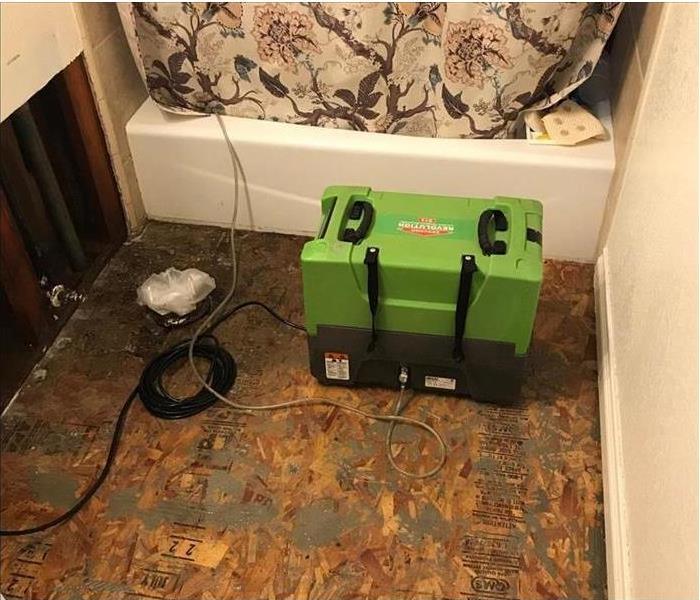 Water damage? What you need is the SERVPRO water damage expert team to take over and put things in order.
Water damage? What you need is the SERVPRO water damage expert team to take over and put things in order.
If A Broken Pipe Floods Your Home, Don't Make These Mistakes.
Living your life is like driving down the road in Whittier, CA. Plenty of people will tell you the best route, but almost no one warns you about the potholes.
When it comes to water in the home due to a broken pipe, there is plenty of advice on how to handle the problem but not as much about pitfalls to avoid. Here are some to consider:
1. Don’t Procrastinate.
Time is your enemy. Shutting off the flow of water is merely the first step. You need to aggressively get all that water out of your home as quickly as possible. Water damage remediation cannot wait until tomorrow.
2. Don’t Assume That the Damage Ends When the Flow of Water Stops.
Water is always on the move. Once it escapes, it goes everywhere and damages almost everything it touches:
- Hardwood floors
- Subflooring
- Lower levels of your home
- Molding and wallboard
- Carpets
- Wooden furniture and cabinets
Also, don’t forget that untreated water damage due to a broken pipe can lead to a mold problem more devastating than the water damage that brought it on.
3. Don’t Overlook the Risk of Electrocution.
With water damage, there is always a chance that it will find its way inside electrical appliances, outlets and other fixtures. Water connecting with electricity increases the possibility of electrocution and fire.
4. Don’t Assume That Your Insurance Won’t Cover This Flooding.
Examine your water damage coverage. If you call your agent first, and if you decide not to file a claim, the agent may still be required to report the call. This report might be part of the basis for a future increase in your premium. However, if you don’t understand the policy, make the call.
5. Don’t Hesitate To Call for Help.
Water damage from a broken pipe is a serious matter. There are skilled and well-equipped water damage remediation specialists ready to come in and restore your home. They are just a phone call away.






 24/7 Emergency Service
24/7 Emergency Service




